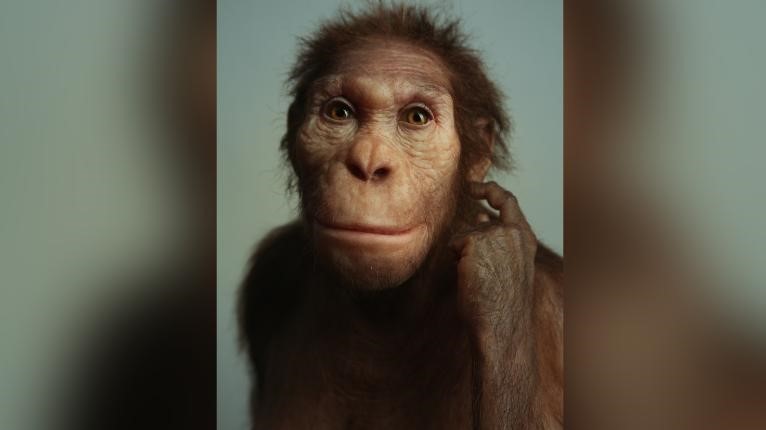Fossils indicate that ancestors walked like humans and climbed like monkeys
3 min read

An ancient human relative was able to walk on the ground on two feet and use its upper limbs to climb and swing like monkeys., according to a new study of 2-million-year-old fossil vertebrae.
An international team of scientists from New York University, the University of the Witwatersrand and 15 other institutions studied lower back bones found in 2015 that belonged to a woman. Australopithecus sediba, a type of ancient human ancestor.
Along with previously unearthed bones from the same person – nicknamed “Isa,” which means protector in Swahili – the fossilized remains form one of the most complete backbones ever discovered in early hominin records, and give an indication of how this human relative might have changed. around the world.
The researchers said that the recently studied cotton grooves were the missing link that proved this Early humans used their upper limbs to climb like apes and their lower limbs to walk like humans..
The fossils were first discovered in 2015 during excavations of a mining track next to Malaba, a World Heritage Site the Cradle of Humanity, near Johannesburg.

So, actually prepared to avoid the dangers of damage, they went back to join other fossils found earlier – which fit the backbone of the fossil skeleton. It is part of the original Australopithecus sediba specimens first reported in 2010.
The discovery also proved, like humans, that Sediba He only had five lumbar vertebrae.
Issa’s excellent save helped show that the curvature of the spine for Sediba It was more extreme than any other Australopithecus ALREADY DISCOVERED – This type of spinal curvature is commonly seen in modern humans and shows strong adaptations to walking on two legs.
“Although the presence of lordosis (inward curvature of the lumbar spine) and other features of the spine are obvious adaptations to walking on two legs, there are other features, such as large upward-directed transverse processes, that suggest strong trunk muscles,” said Professor Gabriel Russo. , of Stony Brook University, another author of the study, “probably for arboreal behaviours.”
Arboreal behaviors refer to climbing and living in trees.

“The spine ties it all together,” added study author Professor Thomas Cody Prang of Texas A&M University, who studies how ancient humans walked and climbed. “How these combinations of traits persisted in our ancestors, including possible adaptations for both effective bipedal walking and effective tree climbing, is perhaps one of the major outstanding questions in the origin of man.”
The study concluded that Australopithecus sediba It was a transitional form of an ancient human relative, and its backbone is clearly intermediate between modern humans and great apes—meaning the species had both human and ape traits in its movements.
The study was published on Tuesday (23) in electronic life magazine.
Translated text. Read the original text In English.
Participate:

“Entrepreneur. Music enthusiast. Lifelong communicator. General coffee aficionado. Internet scholar.”

:strip_icc()/s04.video.glbimg.com/x720/11792055.jpg)

:strip_icc()/s03.video.glbimg.com/x720/11786998.jpg)